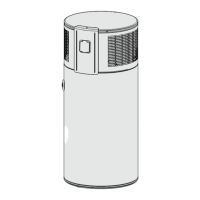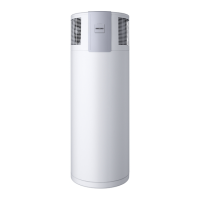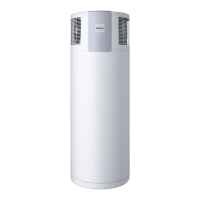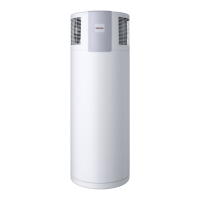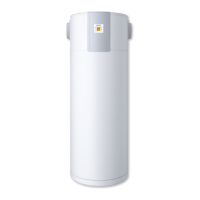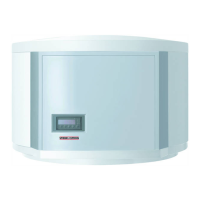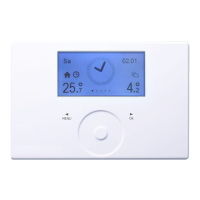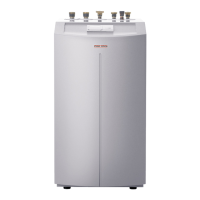16 | WWK 220-300 electronic www.stiebel-eltron.com
INSTALLATION
Installation
10. Installation
!
WARNING Injury
Incorrect installation can lead to serious injury or ma-
terial losses.
Before any work, ensure sufficient clearances for the
installation.
Handle sharp-edged components carefully.
10.1 Water connection
!
Material losses
Carry out all water connection and installation work in
accordance with regulations.
The following material combinations are approved for metal pipe-
work installations:
Cold waterInlet DHW outlet
Copper pipe Copper pipe
Steel pipe Steel pipe or copper pipe
Thoroughly flush the pipework before connecting the ap-
pliance. Foreign bodies, such as welding pearls, rust, sand
or sealant can impair the operational reliability of the
appliance.
!
Material losses
To protect the connections against corrosion the water
connection must be made with flat gaskets. The use of
hemp on connections is not permissible.
The plastic union nuts included in the standard delivery
serve to prevent and insulate against cathodic scaling due
to highly conductive water.
!
Material losses
Too much torque can destroy the plastic union nuts. This
leads to a risk of appliance damage.
Never exceed a torque of 25Nm when using the gasket
supplied as standard. Keep to the permissible torque.
Using the gaskets and plastic union nuts provided, connect
the flanged copper pipes included in the standard delivery to
the "cold water inlet" and "DHW outlet" connections.
Check the gasket and plastic union nut for leaks.
Safety valve
The appliance is a sealed unvented DHW cylinder. Provide the
appliance with a pressure relief valve.
Install a type-tested safety valve in the cold water supply
line. The response pressure of the safety valve must be below
or equal to the permissible operating pressure of the DHW
cylinder.
The safety valve protects the appliance against unacceptable ex-
cess pressure. The diameter of the cold water supply line must be
no greater than the diameter of the safety valve.
Ensure that the expansion water escaping from the safety
valve can drip into a drain, e.g. a tank or funnel.
Ensure the drain cannot be shut off.
Size the drain so that water can drain off unimpeded when
the safety valve is fully opened.
Ensure that the discharge pipe of the safety valve is open to
atmosphere.
Fit the discharge pipe of the safety valve with a constant
downward slope and in a room free from the risk of frost.
Pressure reducing valve
The maximum pressure in the cold water supply line must be at
least 20% below the response pressure of the safety valve. If the
maximum pressure in the cold water supply line is higher, install
a pressure reducing valve.
Drain valve
Install a suitable drain valve at the lowest point in the cold
water inlet line.
DHW circulation
The heat losses incurred in the DHW circulation line and the elec-
trical power consumption of the circulation pump reduce the effi-
ciency of the system. The cooled water in the circulation line mixes
with the cylinder content. Where possible, avoid installing a DHW
circulation line. Where that is not possible, the DHW circulation
pump must be controlled thermally or by time switch.
Thermal insulation
Insulate the DHW line against heat loss in accordance with
locally applicable regulations.
10.2 Connection of an external heat generator (only
WWK300electronicSOL)
!
Material losses
Even if an external heat generator is connected, do not
disconnect the appliance from the power supply as oth-
erwise it is not protected against frost and corrosion. The
power supply must not be interrupted even in winter,
when it is possible that DHW heating is only being pro-
vided via the external heat generator.
314104-38523-9034_WWK_220-300_electronic_en_pl.indb 16 24.02.2015 10:33:37
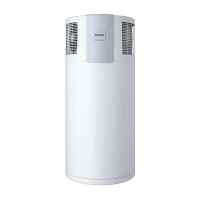
